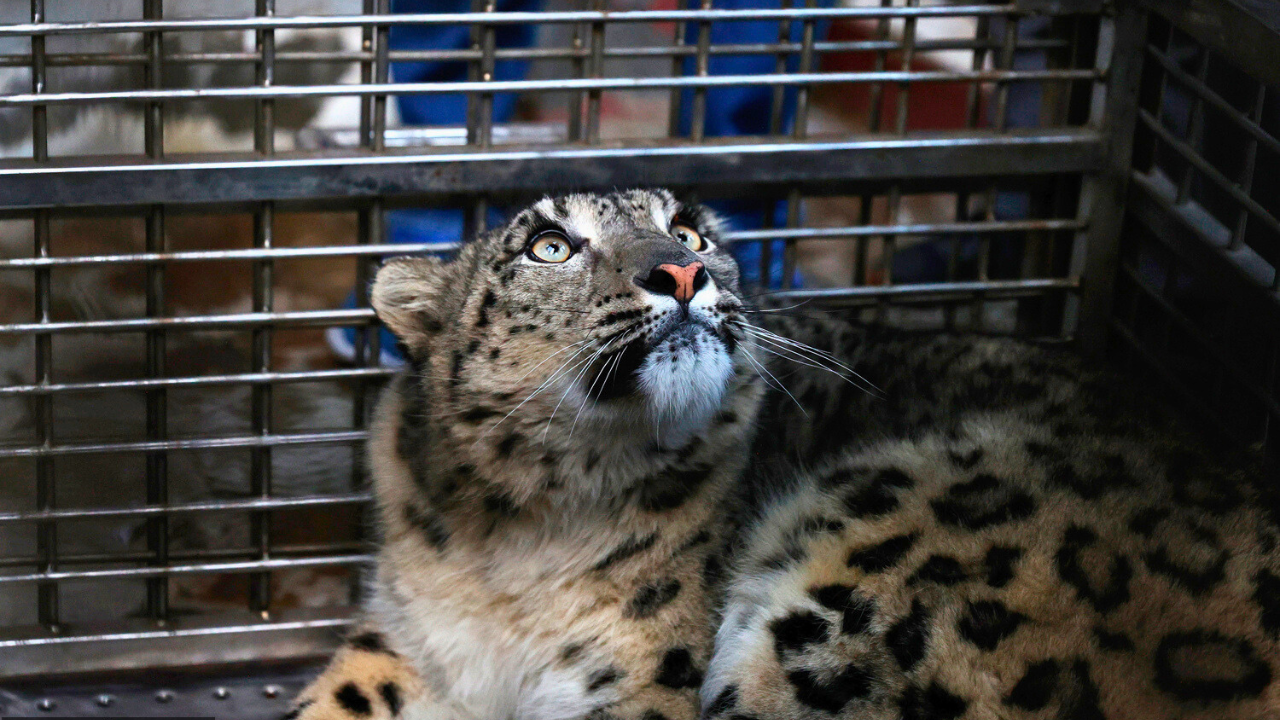
In an unexpected twist of fate, a male snow leopard (Panthera uncia), usually a denizen of the high mountains, has found a new home at the Central Zoo in Kathmandu. After being discovered in the unlikely lowland area of Urlabari in Morang, far from its typical high-altitude habitat, this rare animal has sparked considerable attention and debate among conservationists and the public alike.
The Discovery and Rescue
The snow leopard was first spotted in January 2024. It was an unusual sighting that puzzled experts and locals due to its appearance in a predominantly tiger-populated area at such a low altitude. Snow leopards are typically found at elevations above 2,000 meters (6,600 feet) in Nepal.
Initially rescued by a coordinated effort from the Nepal Police, Armed Police Force, Koshi Tappu Wildlife Reserve, and the National Trust for Nature Conservation, the leopard was transported to Kathmandu for recovery and observation.
Health and Rehabilitation
Upon arrival at the Central Zoo, the leopard was found to be limping but without any visible wounds. It has since recovered from an injury to its right foreleg. It has been placed in a controlled environment suitable for its needs, as the zoo lacks an air-conditioned facility that would ideally suit a snow leopard.

Decisions on the Leopard’s Future
A special committee from the Department of National Parks and Wildlife Conservation deliberated on the future of the leopard, concluding that releasing it back into the wild could pose significant challenges due to the animal’s extended period in captivity and its unfamiliarity with the wild.
Consequently, it was decided that the leopard would remain at the zoo, serving as an educational tool to raise awareness about Nepal’s rich biodiversity.
Conservation and Educational Opportunities
The decision to keep the snow leopard at the zoo has been supported by further arguments about the educational value such rare animals can provide to the general public, particularly in fostering greater awareness and support for wildlife conservation efforts in Nepal. The zoo plans to build a new enclosure to accommodate its new residents better.
Conclusion
The snow leopard’s stay at Kathmandu’s Central Zoo marks a significant chapter in Nepal’s wildlife conservation narrative. While it is unfortunate that the leopard cannot return to its natural habitat, its presence at the zoo offers a unique opportunity to educate visitors about the challenges and successes of wildlife conservation.
This situation underscores the complex interplay between wildlife protection and public awareness, highlighting the ongoing efforts needed to conserve such magnificent creatures in a changing world.



![How To Check SIM Owner Name in NTC [Step-by-Step Guide]](https://localpatrika.com/wp-content/uploads/2024/08/How-To-Check-SIM-Owner-Name-in-NTC-100x75.webp)
![Nothing Phones Price in Nepal [Updated 2024]](https://localpatrika.com/wp-content/uploads/2024/08/Nothing-Phones-price-in-Nepal-100x75.webp)

